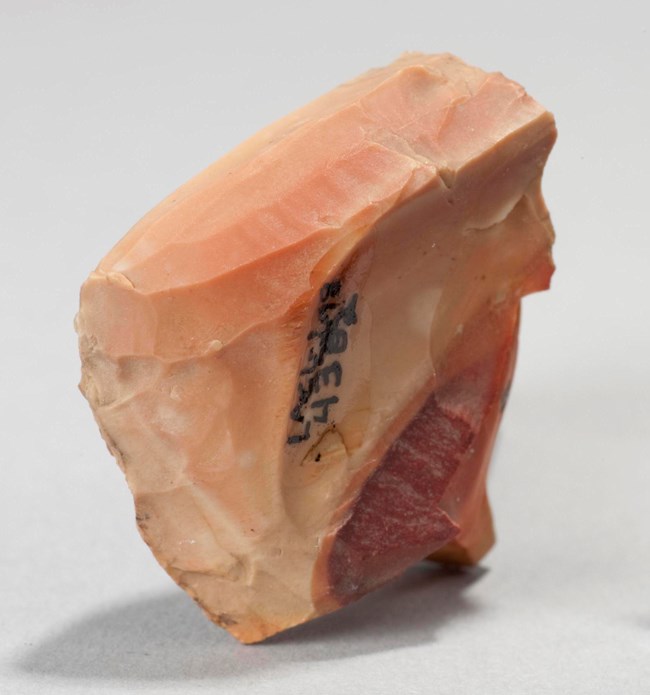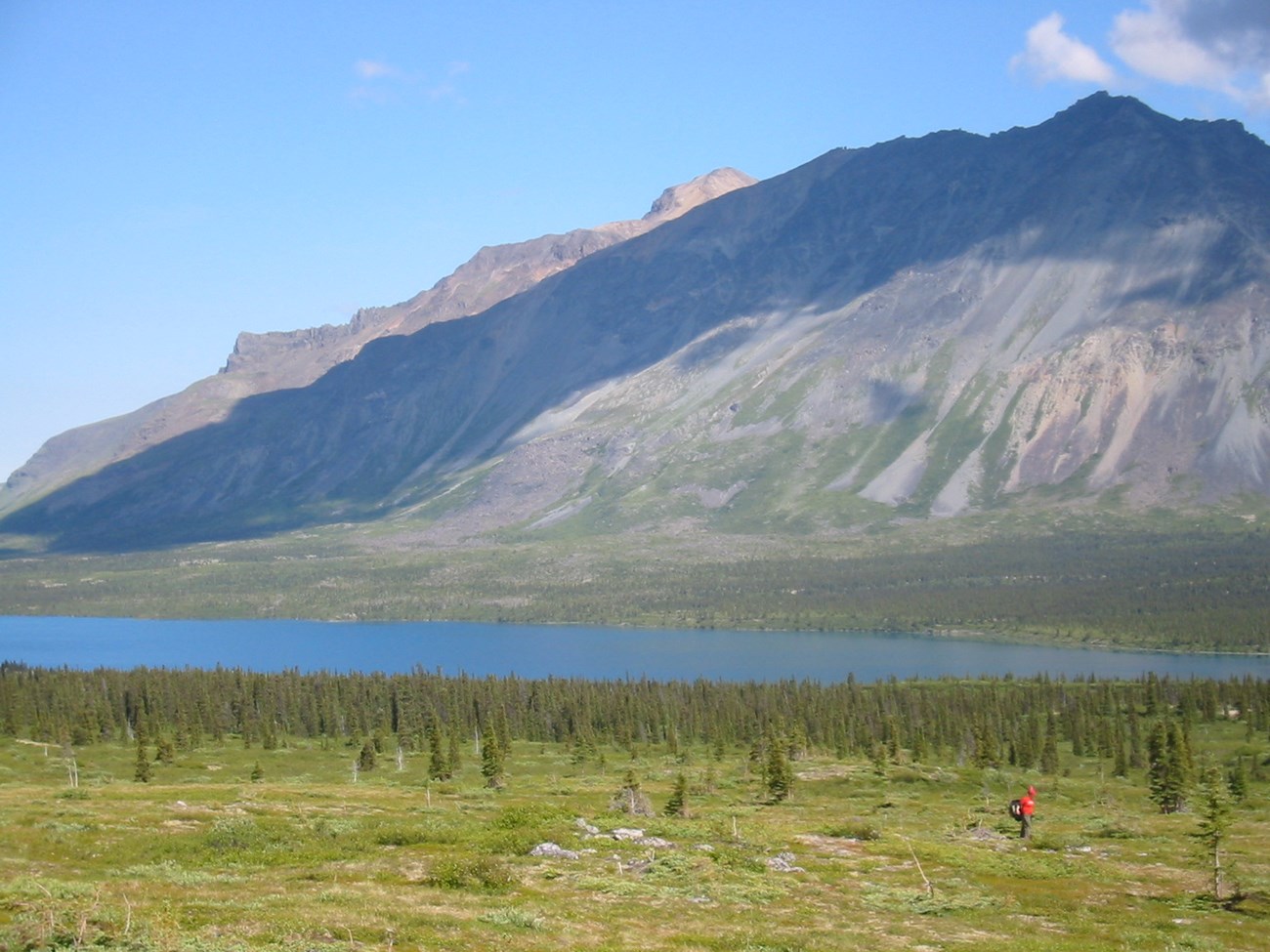Last updated: December 14, 2021
Article
Examining Artifacts Found on the Landscape

NPS Photo
Investigating the Past
This micro-blade core was found near Lower Twin Lake which dates from around 12,000–9,500 years Before Present (BP). Is it the oldest object in the collections? Was it found at the oldest archaeology site in the park? These are hard questions to answer - for one thing, we don't know all there is to know about our park yet, and for another, it depends! Fuzzy answers? Yes. Here's a little bit more to explain...We know that ice retreated from the Lake Clark basin around 14,000BP. We also know based on pollen analysis from sediment cores that vegetation became established in the park around 12,000 to 11,000 BP. We have evidence that people have been in the region for more than 11,000 years, indicating that they moved in very soon after the glaciers retreated. The earliest radiocarbon dates we have are from an archaeological site near what is today named Two Lakes. The dates from this site indicate that people were living here between 8,817 and 11,743 years BP. Although there was lots of lithic material found at this site as a result of stone tool making, there were no diagnostic artifacts found. A diagnostic artifact is one that is indicative of a particular time period or cultural group.
The micro-blade core shown here is among the oldest diagnostic artifacts we've found in the park to date. Made out of a beautiful peachy chert, it is one of several found to the west of what is now known as Lower Twin Lake. Micro-blades are a specialized stone blades made from silica-rich stones like chert, quartz, or obsidian that are that are at least twice as long as they are wide. The artifact you see here is not the blade itself, but the stone, or core, from which the blades were manufactured. Notice that this core is wedge-shaped. Based on this distinctive shape, archeologists have determined it and the others found near Lower Twin fit into a cultural tradition known as the Early Beringian/Denali Complex, which dates from around 12,000–9,500 BP.

NPS Photo
Footprints on the Land
The catch with these micro-blade cores is that there was no datable charcoal associated with them. Fortunately, they are distinctive enough to be identifiable even from small samples without associated charcoal. The lack of a site in the park with BOTH old radio carbon dates AND diagnostic artifacts is not surprising. Although Lake Clark has had several large-scale archeology surveys, only about 5,229 acres have been surveyed at the reconnaissance level—this is just 0.14% of our park's 4 million acres. We have a lot more work to do! As one Dena'ina elder states, "Our ancestor's footprints are all over the land, from the mountains to the sea."These micro-blades cores tell us a great deal about the people who lived near Lower Twin Lake long ago. We know they were focused on hunting large, mobile game, presumably caribou and other land-based animals, because micro-blades like those made from this core this were often used to make composite tools. For example, a spear point could be fashioned by inserting several micro-blades into a groove cut into wood or bone. Those types of slotted bone points have been found in the Lime Hills, not far to the west of Lake Clark National Park and Preserve. The fact that many of the micro-blades found at Twin Lakes are made of high quality chert that is not typical of the fine-grained igneous material commonly seen in the park and preserve suggests that the people who lived at these sites were highly mobile or engaged in a wide trading network.
Read a Book Today!
Where We Found A WhaleAs Brian Fagan writes in Where We Found a Whale, "We have only a mosaic of oral traditions, ethnographic studies, and archeological sites to tell their stories, but we know enough of them to be in awe of their ingenuity, brilliant innovations, and opportunism." Each artifact we find and study hints at another side of the story of those who lived before us. To learn more about the history of the people in the park, check out Where We Found a Whale: A History of Lake Clark National Park and Preserve.
